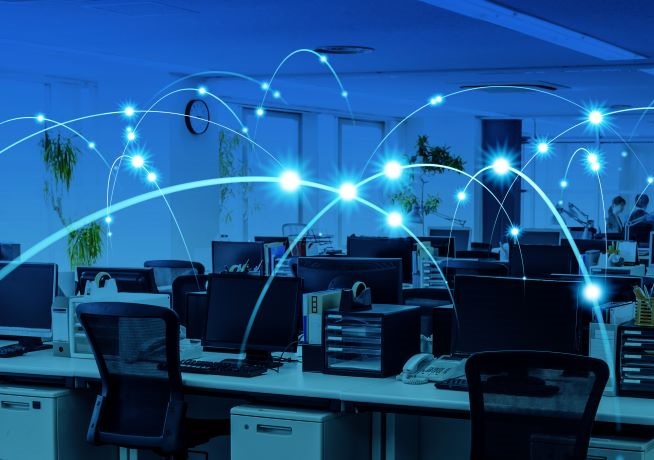As you help your organization plan for a return to the office, don’t forget to look overhead. There, nestled between the fluorescent lights, you’ll undoubtedly spot a Wi-Fi access point... and another over there, and there, and there.
Wi-Fi has become a mainstay of the connected workplace, making collaboration and other web-based applications available for employees sitting at their desks, convening in a conference room, or grabbing a working lunch in the company café. Thanks to those access points, Wi-Fi can be everywhere employees are, and that means they can be a great asset for use in return-to-the-office planning.
In this regard, I turn to an announcement coming out of Cisco. IT and facilities readers are likely familiar with Cisco, but for those who aren’t, Cisco is a leading vendor of networking equipment, including those Wi-Fi access points that are now so pervasive in our workplaces. Cisco’s access points, besides providing Wi-Fi connectivity, feature sensors that, when activated, can gather location data. In turn, workplace strategists can use this location data to manage the re-entry of the office workforce, as Scott Harrell, SVP and GM of Cisco’s Enterprise Networking Business, wrote in a
blog post published earlier this week.
Of course, Cisco has an analytics tool for this purpose, and it’s called
DNA Spaces. This tool isn’t new, but Cisco has updated it with applications aimed at providing real-time and historical analysis of office occupancy to facilitate the return to the office, Harrell wrote. And lest you be fearful of frightening employees with your “eyes in the sky,” so to speak, you can configure how detailed your data is, with your data collection ranging from anonymous statistical counts to identification of individuals, he said.
In the post, Harrell described two ways in which DNA Spaces could come into play for re-opening offices effectively. The first is with an app called Right Now, aimed at addressing the concern that even as organizations reduce the number of employees allowed to come into an office at any given time, once there, folks may not abide by social-distancing guidelines, Harrell said.
“Traditional data for building occupancy — pulled from access card badge-in records — can tell us how many people enter a building and when, but this data stream doesn’t usually monitor which parts of a building people use, nor when they leave. With Wi-Fi, we can gather much more robust data that tracks how people use, move, and occupy spaces throughout the day,” he explained in his post.
Right Now ups the level of insight by tracking new devices that enter a space, as they connect to Wi-Fi. Recording movement from one access point to the next provides a view on occupancy across a building or campus. Used in anonymized mode, Right Now gives workplace strategists a view of how workers in a workplace are behaving overall, throughout each phase of a return-to-the-office plan, Harrell noted.
With data in hand, workplace strategists not only have actionable insight for making technology decisions, such as reconfiguring Wi-Fi hotspot locations, but also for revising re-occupancy strategies and educating employees, he added.
A second tool, Impact Analysis, will help facilities managers determine how employees are using spaces, not just how much they’re using them. Reports on metrics such as time spent in the office and building utilization will be available via this app, said Harrell, noting that this sort of information could be particularly useful for buildings that host visitors and guests.
DNA Space is available for use across Cisco’s Catalyst, Aironet, and Meraki Wi-Fi access points.





